Originally published on SoundStage! Xperience
HiFiMan HE1000 V2 headphones measurements can be found by clicking this link.
 Why are they reviewing these headphones again?
Why are they reviewing these headphones again?
If you’re thinking that, I don’t blame you. At a glance, the HiFiMan HE1000 V2s look just like the HE1000s, and the original price of $2999 USD remains unchanged. Look closer, though, and you can see that the V2s are different in many ways. The HE1000s have been my reference for high-end headphone sound ever since I reviewed them in October 2015. I had to wonder why HiFiMan had changed them, and what effects those changes would have on their sound.
Perhaps the most important change is that HiFiMan has reduced the depth of the earcups’ wooden frames from 14 to 11mm, which reduces the total weight from 480 to 420gm. HiFiMan’s website claims that this gives the V2s a sleeker look, but my guess is that this model’s target audience doesn’t much care how their headphones look -- especially as the HE1000 V2s would almost never be used outside the home.
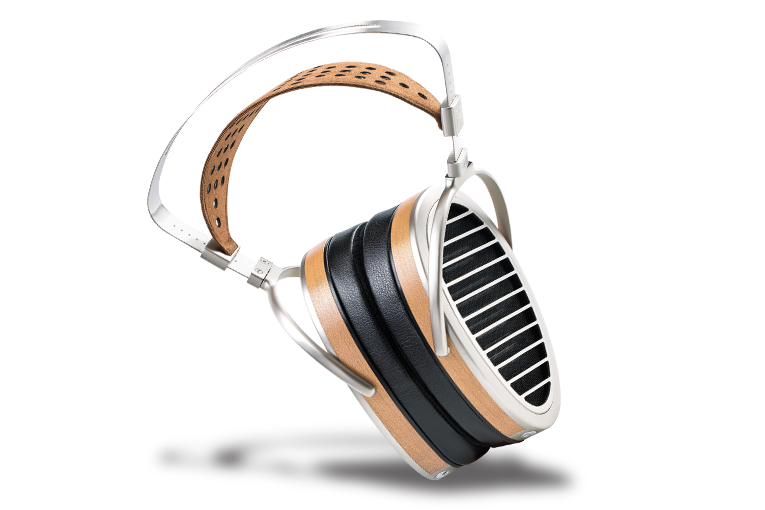
Two mods to the earpads will obviously affect comfort, and almost certainly the sound. (As I recently learned when I did some experiments in headphone voicing, things placed between the driver and the ear have a much larger effect on the sound than things placed behind the driver.) Each pad is thicker and more angled, and the part of the pad that contacts the skin is made of polyester instead of velour. That’s a big plus for me -- I find that, after an hour or two, velour gives me a “prickly heat” feeling that’s mildly irritating.
The headband has been modified slightly, to permit a wider range of adjustment -- the HE1000 V2s will fit smaller heads than the HE1000s could. The cable design is also different; of course, HiFiMan says the new cables sound better than the old ones. Owners of original HE1000s can have them upgraded to V2 status for $650.
Online, outrage has been expressed that HiFiMan has introduced a new, ostensibly improved version of its flagship headphones just a year after that model’s debut -- a practice it’s also followed with its HE560 and Edition X models. With high-end headphones, there’s an assumption that they’ll stick around for a while between updates -- that you’ve invested in something that’s been essentially perfected, for now, and won’t be improved on for some years. Indeed, some of today’s top models have been around for years, unchanged. This is why owners of original HE1000s might feel cheated by the introduction of a new model after just one year. On the other hand, HiFiMan can claim that if, in the interim, it’s found ways to improve a model, why not go ahead and introduce the upgrades as soon as possible, so customers can benefit from them? I can see both points of view.
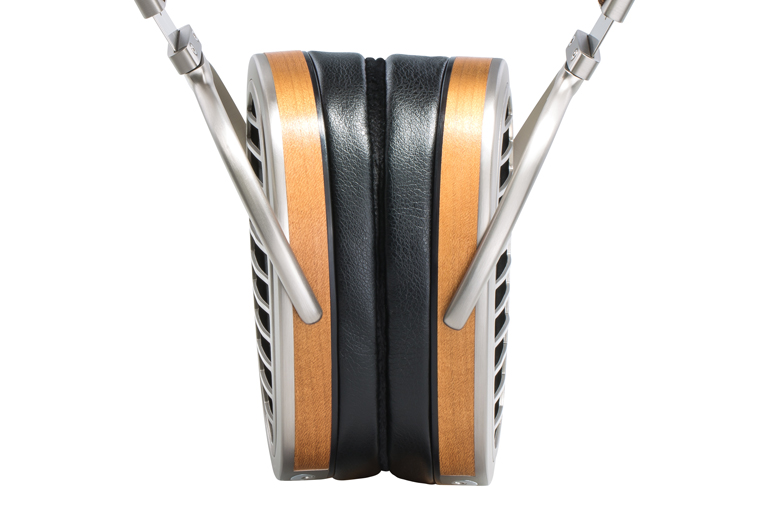
In the box
Like most HiFiMan headphones, the HE1000 V2s come in a wooden case. Included are three cables: one with a 3.5mm (1/8”) plug, one with a 6.3mm (1/4”) plug, and one with a four-pin XLR connector, for use with headphone amps offering balanced output. (The original HE1000s didn’t include the cable terminated with a 3.5mm plug.)
Use
I found the original HE1000s quite comfortable, and the HE1000 V2s subtly more so. The difference in weight, while not dramatic, is definitely noticeable, and I prefer the feel of the polyester pads, even if velour feels a bit cooler to the touch.
An especially nice thing about the old and new HE1000s is that their sensitivity is high enough that you can use them with a smartphone. You won’t get the best sound quality that way -- my Samsung Galaxy S6 phone couldn’t produce bass as tight as I heard from my Audio-gd NFB-1AMP headphone amp, and with some recordings it couldn’t play as loudly as I like -- but it was still quite enjoyable to listen to. This is a point especially worth making because the HE1000 V2s can fold flat, making it reasonably practical to carry them on a business trip; and their high sensitivity means that if you don’t want to pack a headphone amp, you don’t absolutely have to.
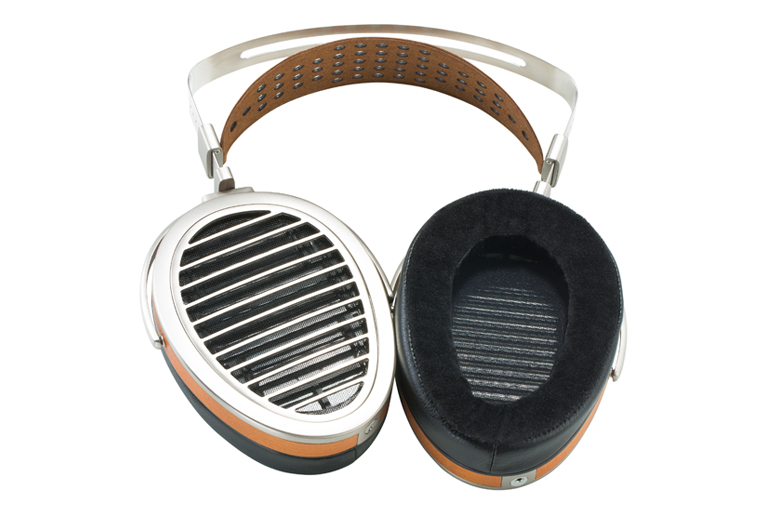
That said, do use the HE1000 V2s with a headphone amp whenever possible; in most cases, you’ll get better dynamics, a bigger sense of space, and somewhat smoother treble. I did most of my listening with my Audio-gd amp, using its balanced output and the HE1000 V2s’ balanced cable.
Sound
When I want to find out quickly how one audio product compares to another, I usually play “Rosanna,” from Toto’s IV (16-bit/44.1kHz WAV, Columbia) -- its busy arrangement packs the audioband from 40Hz to 20kHz, almost like pink noise. I can hear changes in tonal balance immediately with this recording, and when I went from the HE1000s to the HE1000 V2s I heard some extra brightness: the snare drum was a little snappier, the cymbals a bit crisper.
Maybe a little too much extra treble, I thought -- but when I went back to the HE1000s after some 30 minutes of listening, the originals now sounded a bit soft in the treble. This is something that’s often overlooked in audio reviews: The reviewer can get used to minor flaws or eccentricities in audio products, and end up “listening around” them. I expect that some audiophiles, when directly comparing the HE1000s and the V2s, will say that the new model presents more detail. But to my ears, it didn’t sound like more detail -- just a bit more energy in a certain part of the treble range. In my opinion, it was only a difference, not a clear advantage.
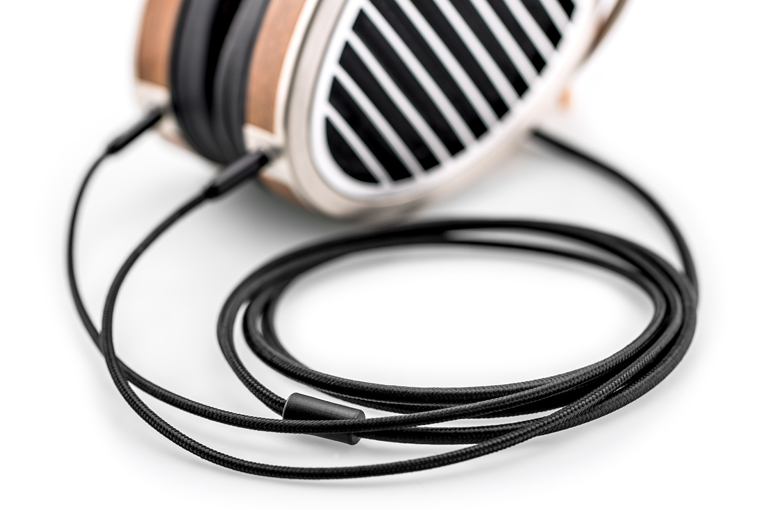
In my review of the original HE1000s, I cited the soundtrack album for the film Once (16/44.1 WAV, Columbia) as an example of a recording that the HE1000s completely nailed. When I played it through the HE1000s, Glen Hansard’s voice in “Lies” had a wonderfully natural sense of space -- not stuffed into a narrow stereo image, not expanded to unrealistic proportions, but sounding much as if he were in a large living room singing to me from about 12’ away. Compared to the HE1000s, the HE1000 V2s sounded much the same but gave me a little more emphasis in the mid-treble, which brought out Hansard’s breath sounds more. Both were great reproductions of this track, but it’s tough to say which was more realistic. One listener might think that the HE1000 V2s’ extra little bit of treble represents greater realism and more detail. Another might say it adds undue emphasis.
To me, the biggest strength of this new design is that sense of spaciousness, which can easily be heard from trumpeter Booker Little’s second album as a leader: Booker Little, from 1960 (16/44.1 WAV, Time). It’s a beautifully recorded, gorgeously played collection of tunes by a master musician who died at 23. I don’t know how or where it was recorded, but the album has a wonderfully natural reverberance that’s especially obvious when Little moves back from the microphone in “Life’s a Little Blue,” and during bassist Scott LaFaro’s solo in that tune. The HE1000 V2s beautifully captured the sound of this record, delivering a realistic sense of reverberance appropriate to the material and the period. I played the same recording through Audeze’s LCD-X headphones, a well-regarded open-back, planar-magnetic design, and while I thought the LCD-Xes’ portrayal of the cymbals and hi-hat sounded smoother and more natural, the Audezes produced a less open sense of space.
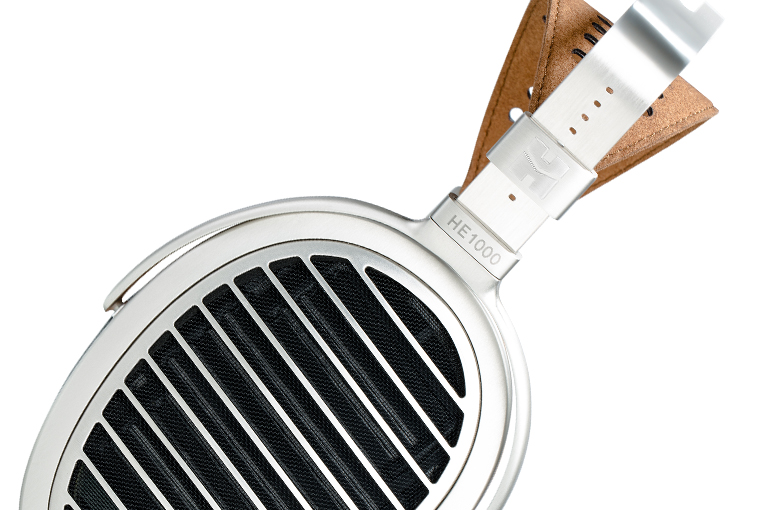
Even within the same recording, I could go back and forth about whether the HE1000 V2s’ little bit of extra treble was a good thing. In Valerie Joyce’s recording of “Softly as in a Morning Sunrise,” from Blue Coast Records’ Special Event 31 (DSD64, Blue Coast), the HE1000 V2s gave me a bit more twang and pluck in guitarist Marco de Carvalho’s strings than could be delivered by the original HE1000s or the LCD-Xes. Based on regular exposure to acoustic guitars in the weekly jazz jam sessions I host at my house, I think the HE1000 V2s got the guitar right here. However, Joyce’s voice sounded a little spittier through the HE1000 V2s than through the HE1000s or the LCD-Xes; I thought the Audezes came closest to how her usually deep, dark voice actually sounds.
Of course, those last two are examples of delicate, natural-sounding recordings of relatively sedate music. Nonetheless, the differences I heard through the headphones I’ve mentioned remained consistent with Jeff Beck’s You Had It Coming (16/44.1 WAV, Epic), which I used in my review of the original HE1000s. It’s one of the subjectively loudest, most raucous recordings I own. The extreme nature of this recording showed that the HE1000 V2s could reproduce loud rock competently, but without the gusto some other headphones can deliver. With “Dirty Mind,” the HE1000 V2s delivered a colossal sense of space that I doubt any other headphones on the market could beat. However, at the same listening level the LCD-Xes gave me more kick from the bass drum and from Beck’s low E-string; it felt as if it was pressurizing my eardrums more, which is probably exactly what was happening. The LCD-Xes’ sense of space was less dramatic, their sound darker.
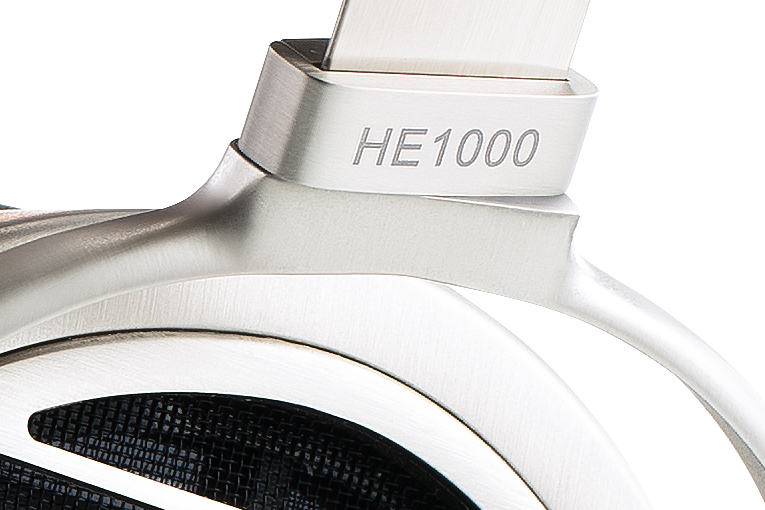
Reviewing an updated version of an older headphone model demands clinical comparisons such as the ones I’ve made above, but I fear that such analysis, vital as it is to the task at hand, can overlook what a wonderful experience it was to listen to the HE1000 V2s. When I put on “Epistrophy,” performed by the jazz trio Thr33’s Company (24/96 FLAC, Chesky), the sense of space around Javon Jackson’s tenor saxophone and Billy Drummond’s cymbals was so huge and natural that it was hard to believe it was being produced by headphones. When people are considering buying high-end headphones, this is precisely the sort of experience they crave -- and the HiFiMan HE1000 V2s delivered it better than any other headphones I’ve tested.
Conclusion
HiFiMan’s HE1000 V2s aren’t all that different from their original HE1000s, and that’s a good thing -- the HE1000s are widely regarded as being some of the very best headphones you can buy. Are the V2s better? In my opinion, their sound is a little different from their forebears’ -- not better. The V2s are a little more comfortable, and I do appreciate having that extra cable for use with 3.5mm headphone jacks. But hey -- when you’re already making one of the world’s best headphones, it’s pretty tough to deliver a dramatic improvement.
. . . Brent Butterworth
Associated Equipment
- Sources -- Musical Fidelity V90-DAC, Samsung Galaxy S6 smartphone
- Headphone amplifier -- Audio-gd NFB-1AMP
HiFiMan HE1000 V2 Headphones
Price: $2999 USD.
Warranty: 30 days, refund, shipping cost not refundable; three years, replacement, customer pays shipping.
HiFiMan
Phone: (201) 443-4626
Website: www.hifiman.com





